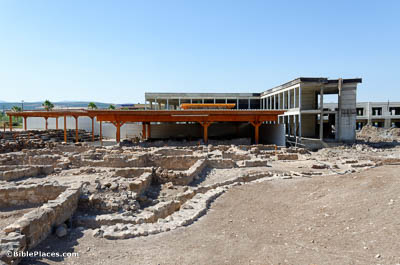Magdala

An Important Fishing Center
Marketplace and Synagogue


First-Century Synagogue
Ornamented Table in the Synagogue
A unique feature of this synagogue was a decorated stone inscribed with a seven-branched menorah. According to the excavation director, Dina Avshalom-Gorni, “This is the first time that a menorah decoration has been discovered from the days when the Second Temple was still standing. This is the first menorah to be discovered in a Jewish context and that dates to the Second Temple period/beginning of the Early Roman period.” This depiction of a menorah lends evidence to the belief that, even in the Second Temple period, there was some symbolic connection between synagogues and the temple.


Magdala's Ancient Port
Josephus wrote that the town had many boats, shipyard workers, and wood supplies. He reported that he brought 230 boats from Migdal to Tiberias. The Franciscan excavators, however, used the harbor as a dump, not realizing its significance. The harbor is composed of two parts: the promenade and the sheltered basin. A mooring stone has been found at the western end of the harbor. The breakwater is 20 feet (6 m) wide and 230 feet (69 m) long, and the foundations are made of basalt and limestone boulders. The basin covers one acre (0.4 ha) and has a quay.

Download all of our Galilee and the North photos!
$ 39.00 $ 49.99 FREE SHIPPING
Related Websites
Magdala (See the Holy Land) An overview and many photographs of the site.
Discoveries in Mary Magdalene’s Hometown (Bible History Daily) A helpful illustrated introduction to some of what has been excavated in Magdala.
The Magdala Stone: The Jerusalem Temple Embodied (Bible History Daily) Posits a few theories about the uses of the stone, including five photos.
Recent Archaeological Excavations at Magdala (PDF on academia.edu) Along with a map, many photographs, and footnotes, this paper gives a good overview of the site, as of 2016.
The Fishy Secret to Ancient Magdala’s Economic Growth (Bible History Daily) A few photos illustrate the income sources of ancient Magdala.
Researchers Unearth 2,000-Year-Old Synagogue in Mary Magdalene’s Supposed Hometown (Smithsonian Magazine) An article about the 2021 discovery of a second ancient synagogue in Magdala.